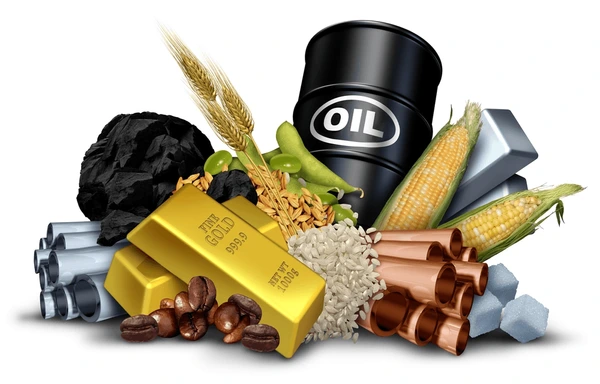Nitrogen in the earth moves continuously in a cycle involving the atmosphere, biosphere, and lithosphere, resulting from the activity of bacteria, the metabolic processes of living organisms, and the decomposition of buried organic materials

Nitrogen, also known as azot, is a Chemical element with the symbol N and atomic number 7. It is a nonmetallic, odorless, tasteless, and colorless gas that makes up about 78% of the Earth's atmosphere by volume. Nitrogen is essential for all living organisms because it is a key component of amino acids, proteins, and nucleic acids, which are the building blocks of life. Nitrogen is an element with the symbol N and atomic number of 7 in the periodic table of elements and is one of the main components of the Earth's atmosphere and a vital element among all organisms. In its pure form, nitrogen exists as a diatomic molecule, meaning two nitrogen atoms are bonded together (N2). This form of nitrogen is relatively unreactive and stable under normal conditions. It requires a significant amount of energy to break the strong triple bond between the nitrogen atoms.
Nitrogen gas (N2) is highly stable and cannot be readily used by most organisms. However, certain microorganisms, such as bacteria and cyanobacteria, have the ability to convert atmospheric nitrogen into more accessible forms through a process called nitrogen fixation. These organisms possess enzymes called nitrogenases that can break the strong nitrogen triple bond and convert N2 into Ammonia (NH3) or ammonium (NH4+). This ammonia can then be utilized by plants and other organisms to build organic molecules. Nitrogen is a crucial nutrient for plant growth. It is often a limiting factor in agricultural productivity, so nitrogen-based fertilizers are commonly used to supplement the available nitrogen in the soil. These fertilizers can provide plants with the necessary nitrogen compounds, such as ammonium nitrate (NH4NO3) or urea (CO(NH2)2), to support their growth and development.
At normal temperature and pressure, nitrogen is a free, colorless, odorless, tasteless gas. As an inert gas, it reduces the amount of Oxygen available to oxidize natural materials, thus preventing spontaneous combustion of materials and corrosion of metals. It also protects living organisms from inhaling pure oxygen. Nitrogen in the earth moves continuously in a cycle involving the atmosphere, biosphere, and lithosphere, resulting from the activity of bacteria, the metabolic processes of living organisms, and the decomposition of buried organic materials.
In the body of living organisms, nitrogen atoms are part of the molecular structure of important substances such as amino acids, proteins, and nucleic acids. In industry, nitrogen gas is used as an alternative to air in Food packaging, Steel production and electronics. Liquid nitrogen is a "cryogen" used in food freezing and transportation. In addition, ammonia is a nitrogen compound used in chemical fertilizers, synthesis of nitric acid and other valuable compounds. Nitric acid is an oxidizing agent in liquid fuel rockets. It is also used as a gunpowder and a raw material for TNT bombs. It should be noted that nitrogen is also used in the manufacture of drugs.
Nitrogen gas has various industrial uses beyond fertilizer production. It is employed in the food and beverage industry to preserve freshness and prevent spoilage by creating a nitrogen-rich atmosphere that inhibits the growth of bacteria and fungi. Nitrogen is also used in the production of electronic components, such as transistors and diodes, to create an oxygen-free environment that prevents oxidation during manufacturing processes. Nitrogen is an essential element for living organisms. It is a fundamental component of amino acids, which form proteins—the building blocks of cells. Nitrogen is also present in nucleic acids like DNA and RNA, which carry genetic information. Organisms obtain nitrogen for their biological processes by consuming nitrogen-containing compounds in food or by directly utilizing atmospheric nitrogen through symbiotic relationships with nitrogen-fixing bacteria.
Nitrogen is the most abundant element in the Earth's atmosphere in terms of volume (78%), and is obtained for industrial purposes by distillation of liquid air. Compounds containing this element have also been observed in outer space. Nitrogen-14 is produced by nuclear fusion in stars. Nitrogen is a major component of animal waste (such as manure or fertilizer) and is commonly found in the form of urea, uric acid, and compounds from nitrogen products.
Excessive use of nitrogen-based fertilizers in agriculture can have environmental consequences. When nitrogen-rich fertilizers are applied in excess, they can leach into water bodies or be carried by runoff, leading to nutrient pollution in rivers, lakes, and coastal areas. This can cause eutrophication, where excessive nutrients stimulate excessive growth of algae and aquatic plants, depleting oxygen levels and harming aquatic ecosystems. Nitrogen gas makes up a significant portion of the Earth's atmosphere, but it is relatively unreactive and does not readily participate in chemical reactions. However, during high-energy events such as lightning strikes or volcanic activity, nitrogen can be converted into reactive nitrogen compounds, such as nitrogen oxides (NOx). These compounds play a role in atmospheric chemistry, contributing to the formation of smog and participating in the process of acid rain.
Nitrogen has numerous industrial applications. It is commonly used in the production of ammonia, which is essential for the manufacturing of fertilizers, explosives, and various chemicals. Nitrogen gas is also used to create an inert atmosphere in certain industrial processes, such as in the production of electronics, to prevent oxidation or combustion. In addition to its presence in the atmosphere, nitrogen can be found in various organic and inorganic compounds. It is a vital component of proteins, DNA, and RNA, as well as many other organic molecules. Nitrogen cycles through the environment through processes like nitrogen fixation, nitrification, and denitrification, which involve the conversion of nitrogen between different chemical forms.




